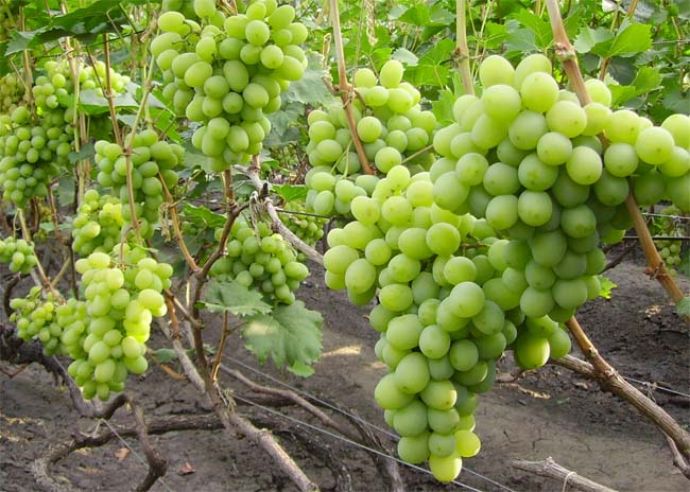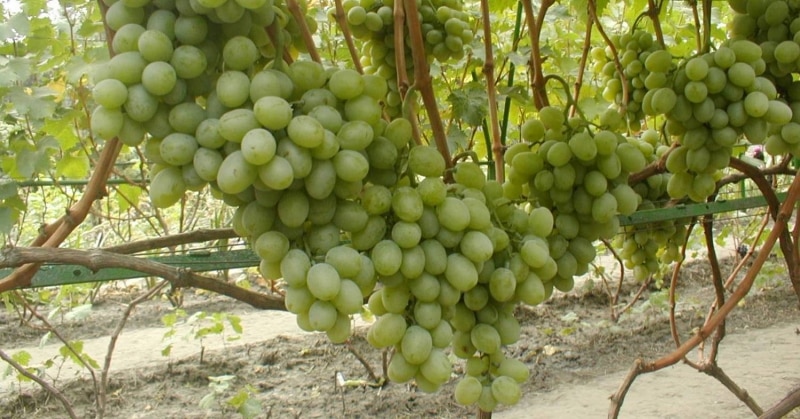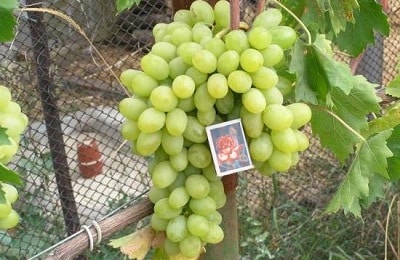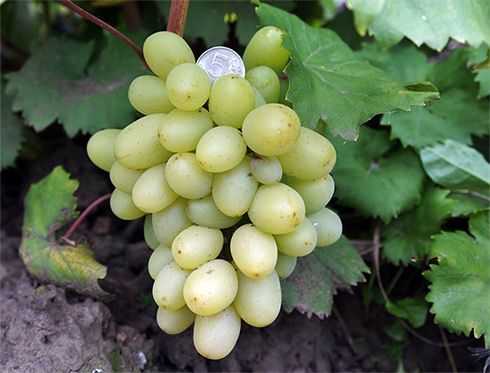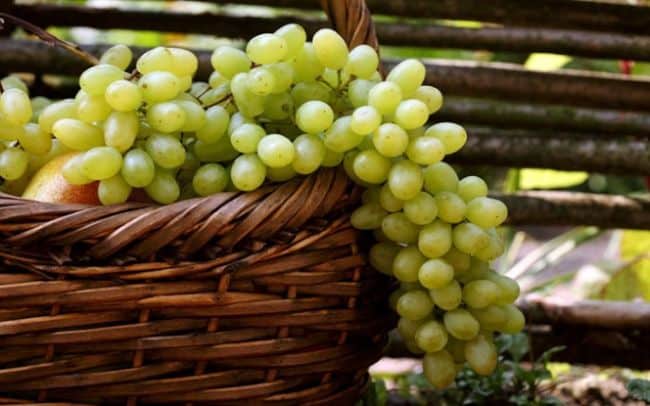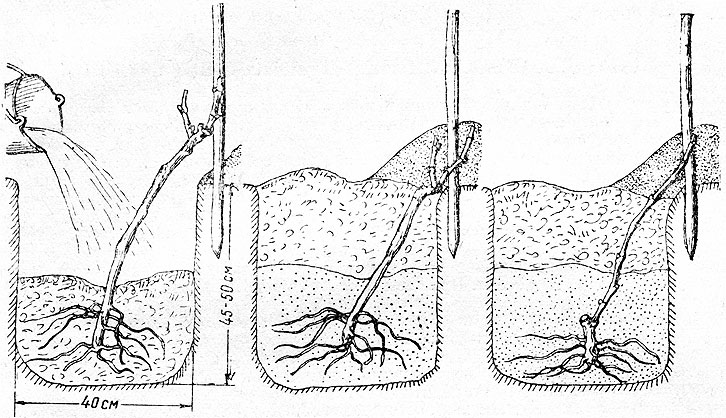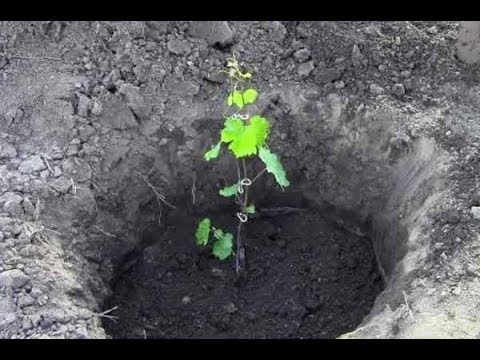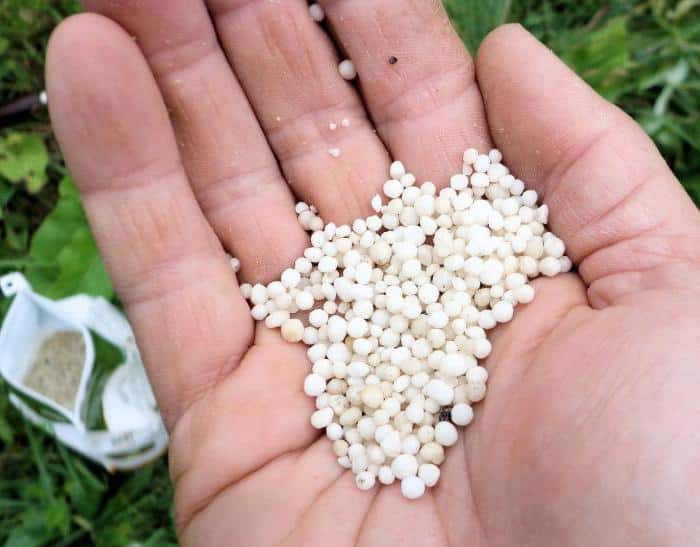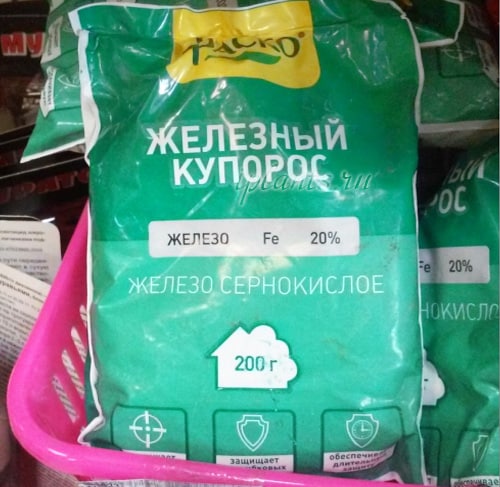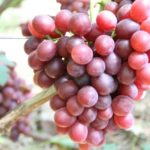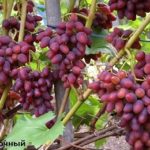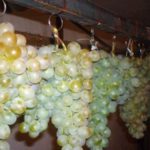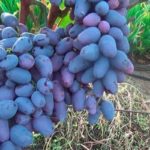In recent years, viticulture has been developing rapidly and occupying a leading position, taking away the palm even from gardening. Summer residents and owners of private gardens are allocating more and more areas to growing vines. Preference is given to unpretentious, productive varieties with excellent taste and commercial qualities. Grapes of the Podarok Zaporozhye variety can become the real pride of its owner.
- History of the development of the variety Gift to Zaporozhye
- Advantages and disadvantages
- Comparison of hybrids: New Gift to Zaporozhye and Gift to Zaporozhye
- External characteristics
- Bush
- Bunches
- Technical data
- Resistance to sub-zero temperatures
- Immunity to disease
- Pollination of the variety
- Productivity
- Reproduction methods
- Recommendations for care and cultivation
- Preparing cuttings for planting
- Preparing the landing site
- Well preparation
- Irrigation
- Top dressing
- Garter and shaping
- Control and prevention of diseases and pests
- How to cover grapes for the winter
- Fruit ripening and harvesting
- Application of berries
History of the development of the variety Gift to Zaporozhye
The first grapevine appeared on our planet a long time ago. Even in the tombs of Egyptian pharaohs, seeds from these fruits were discovered. The Bible also contains references to the cultivation of vines as far back as the time of Noah. The Podarok Zaporozhye grape was bred in the city of the same name by amateur breeder E. A. Klyuchikov.
He worked on his brainchild for a long time and got it as a result of a complex crossing of three popular varieties at once:
- Esther;
- Kesha-1;
- Tsytsa is stable.
The new product turned out to be not only comprehensively sustainable, but also had excellent product indicators.
Advantages and disadvantages
The popularity of Podarok Zaporozhye grapes is due to a lot of advantages that set them apart from their competitors:
- high and stable yield;
- excellent taste;
- good commercial quality;
- the fruits in the cluster are uniform;
- suitability for commercial cultivation;
- resistance to wet and rainy weather;
- excellent frost resistance;
- the crop is well stored for several months;
- increased resistance to fungal diseases.
According to reviews from winegrowers, the disadvantage of grapes is that they must be transported very carefully. The pulp is very juicy, and the fruits are easily separated from the cluster, so for transportation the bunches must be laid in one layer.
Comparison of hybrids: New Gift to Zaporozhye and Gift to Zaporozhye
Several years after the success in breeding the Podarok Zaporozhye grape variety, the breeder presented to gardeners a modified new product with improved characteristics. Outwardly they are very similar, but New Gift to Zaporozhye has significant differences. It was based on its predecessor, which was crossed with the equally popular variety Delight. When comparing the two hybrids, the following features of the new product stand out:
- fruiting occurs very early, 120 days after flowering;
- medium height vine;
- flowers of female and male type;
- the mass of the bunches ranges from 700 g to 2 kg;
- the color of the berries is more saturated;
- Tasters rated the taste quality as 8 points;
- 96% of ovaries mature;
- frost resistance and disease resistance remained at the same level;
- excellent survival rate of shoots;
- fruit load is limited to 40 buds;
- suitability for cultivation by agricultural enterprises.
External characteristics
The description of the variety gives an idea of its main distinctive features. Thanks to its external characteristics, Gift Zaporozhye can be easily recognized among other similar varieties.
Bush
The grape bush of the Podarok Zaporozhye variety is tall, with a powerful vine. It grows quickly and begins to bear fruit by next year. The leaves are three-lobed, dark green in color, slightly dissected. The flowers are predominantly female.
Bunches
The weight of one bunch of grapes of the Podarok Zaporozhye variety ranges from 600 g to 2 kg. The fruits are arranged tightly, and the brush itself has a cone-shaped or cylindrical shape. The berries are the same size and ripen almost simultaneously. The weight of one berry is 10-18 g, its length is 32 mm, and its width is 25-28 mm.Fruits that ripen in the shade are light green in color at the stage of technical ripeness, and in the sun they are whitish with a barely noticeable waxy coating.
The pulp of Gift Zaporozhye is very juicy, fleshy, has a pleasant taste with a slight apple tint. Tasting score of fruits is from 8 to 8.4 points. The skin is quite dense and elastic, which ensures the berries' resistance to cracking.
Technical data
Gift to Zaporozhye has unique characteristics that set it apart from other varieties.
The plant is suitable for growing in almost any region.
Resistance to sub-zero temperatures
This grape variety demonstrates excellent frost resistance and can withstand temperatures down to -24 °C, but it is still recommended to cover and insulate it for the winter.
Immunity to disease
Gift to Zaporozhye has increased resistance against fungal diseases. He is not affected by mildew at all. In other cases, timely preventive treatments will help reduce the risk of the disease to zero.
Pollination of the variety
The grapes of this variety have female peduncles. It is pollinated under any conditions; for this you only need to plant a couple of varieties nearby that have bisexual flowers.
Productivity
On one fruiting shoot, 1-2 massive clusters of grapes are formed. Fruitfulness is 70%. The harvests are stable and rich, fruiting occurs already in the second year after planting.
Reproduction methods
It is best to propagate the Podarok Zaporozhye grape variety by cuttings. You can also use layering. But you shouldn’t propagate it with seeds, since the varietal qualities from the mother hybrid will not be passed on to the children.
Recommendations for care and cultivation
Caring for grapes requires some dedication from the gardener. This is not to say that this procedure is complicated, it is just time-consuming.
The presence of certain skills and devices significantly speeds up and simplifies the work of caring for vineyards.
Preparing cuttings for planting
Cuttings stored in the basement are placed in damp peat or sand before planting in the garden. This will prevent them from drying out. In spring, the seedlings look like a trunk without leaves, but with swollen buds. It is recommended to plant from May to October. On a young plant, only 3 shoots are left on one branch.
Preparing the landing site
Grapes are considered a southern plant, so for planting they choose a well-lit place, protected from drafts and the north wind. There should be several more varieties with bisexual flowers growing nearby. Before planting the vines, the soil is loosened well and the roots of weeds are removed.
Well preparation
When planting several cuttings in one area, the distance between the holes is left at least 2.5 meters. The depth of the planting hole should be 1 meter, and the width should be twice the diameter of the root system of the young plant. A drainage layer is laid at the bottom of the pit. When preparing the holes, immediately plan the placement of trellises or supports.
Irrigation
Watering is a mandatory measure for caring for Podarok Zaporozhye grapes. The plant especially needs it during flowering and fruit formation. Drip irrigation has proven itself very well, which, in addition to irrigation, allows for dosed fertilizing.
Top dressing
At first, after planting, the vineyards do not need to be fertilized, but after a year of abundant fruiting, organic matter (humus), complex mineral and phosphorus-potassium fertilizers should be applied.
Garter and shaping
Grapes of the Podarok Zaporozhye variety require obligatory garter. When pruning a bush for the winter, leave a little more buds than recommended, depending on the thickness of the vine. If some shoots freeze, then this trick will make it possible not to be left without a harvest. After harvesting the brushes, the lower branches are removed to a height of up to half a meter from the ground level.
The next tier of shoots is cut off by 10% of the length, and all lateral shoots are removed. From 8 to 12 buds are left on the upper branches and future fruit shoots.
Control and prevention of diseases and pests
In spring, grapes are treated with iron sulfate. Pest prevention is carried out in three stages. The first is when the buds just open, then along the first leaves and finally - before flowering begins.
How to cover grapes for the winter
Before the onset of cold weather, the grapevine is prepared for winter. To do this, the shoots are cut to a length of 1 m, shaped into a fan and bent towards the soil. A layer of earth or sawdust is poured on top, a layer of spruce branches is laid, or covered with fallen leaves.
Fruit ripening and harvesting
The ripening of grapes occurs approximately in the third ten days of August, but in some regions this period is delayed until September 10. In the absence of frost, the tassels can remain on the vine until mid-October, without losing their taste and marketability.
Application of berries
The grapes of this variety are considered dessert berries, therefore they are consumed mainly fresh.However, they can also be processed, juiced, and even homemade wine. Also, the fruits are suitable for transportation and long-term storage; they do not lose their taste and appearance until the New Year holidays, provided the necessary conditions are provided.

